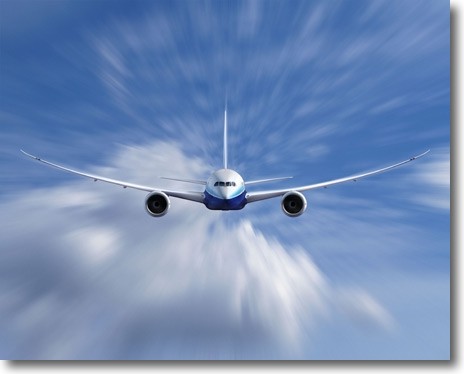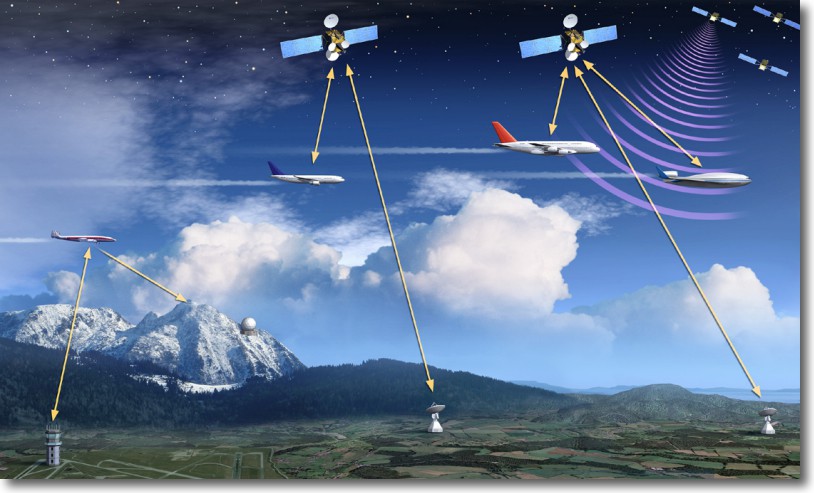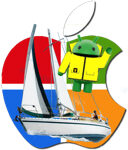 I mentioned in two previous posts, on the one hand ADS-B equivalent to AIS for aeronautics, on the other hand, the future of satellite communications with the next constellation Iridium NEXT. Believe it or not, the NewScientist teaches us, In a recent article dated 14 December, that the Iridium NEXT satellites will carry ADS-B transmission devices. I give you below a freely adapted translation.
I mentioned in two previous posts, on the one hand ADS-B equivalent to AIS for aeronautics, on the other hand, the future of satellite communications with the next constellation Iridium NEXT. Believe it or not, the NewScientist teaches us, In a recent article dated 14 December, that the Iridium NEXT satellites will carry ADS-B transmission devices. I give you below a freely adapted translation.
These two communication technologies combined will revolutionize air traffic in the next ten years.
The next generation of Iridium communication satellites will come as a pleasant surprise for the environment. Replacement of the Iridium constellation satellites, planned to start in 2015, will do much more than modernize satellite telephony services. Indeed, these satellites will carry a set of transmitters that could revolutionize long-haul flights, saving airlines billions of dollars in fuel and preventing millions of tons of CO² emissions.
For the first time, ADS-B transponders installed in satellites will allow air traffic controllers to locate aircraft over the oceans, remote deserts or poles where radar coverage does not exist. This will significantly increase safety for airlines by constantly monitoring aircraft if an aircraft is in difficulty, and will also allow controllers to guide aircraft on optimal flight paths, Reducing fuel consumption and carbon emissions.
The ADS-B transmission system is intended to replace expensive radar stations, Unreliable and short-range. ADS-B gathers the aircraft's call sign, its GPS position, its speed and altitude in numerical packets of 112 bits continuously streamed by the aircraft to the control stations.
But as with the current radar, ADS-B messages have a limited range. The transponders grafted onto the new satellites will also serve as relays for the signals that they will be able to pick up anywhere around the globe by retransmitting them to ground stations. This will provide for the first time a total and permanent view of all aircraft in flight.
To avoid possible collisions, Long-haul flight plans over oceans currently require them to fly at great distances from each other. A few planes can fly in the air corridors with favorable winds, while others have to pass through less favorable wind flows. "If air traffic control can accurately locate aircraft in real time, they can fly them on much closer routes and on the most efficient routes. SO, they will save fuel and reduce emissions," says Dan Mercer of Iridium Communications.
A study commissioned by Iridium found that between the start of the service offered in 2017, and 2030, This technology is expected to save airlines about 7 billion dollars in fuel and reduce carbon dioxide and nitrogen oxide emissions by 35 million tonnes. Another projection that focused on a few flights over the North Atlantic argues that ADS-B in orbit will save airlines money 110 million dollars in fuel and 300.000 tonnes of emissions in 2018 only.
The system can "improve the efficiency of ocean air traffic management by reducing aircraft separation distances and enabling greater route optimization", explains Pauline Lamb, Director of Operations for National Air Traffic Services in Prestwick, United Kingdom. She adds that her organization is working to fully understand the benefits it will bring.
Meanwhile, One of the world's largest air traffic management firms, Nav Canada in Ottawa, Ontario, formed Aireon, a joint venture with Iridium. Aireon will operate and provide ADS-B transponder service to airlines and air traffic control providers.

All this has little to do with it, you could say, with our maritime activity. Surely. But when it comes to means of navigation or communication, It is interesting to see the evolution of technologies that affect us indirectly. We could have imagined embarking on these satellites AIS transponder systems to track all the ships around the planet, Why not ?
—


Yes, especially since planes pass each other much better in the sky than boats on the water …
Fortunately, you might say, but maritime navigation is far behind in this area …